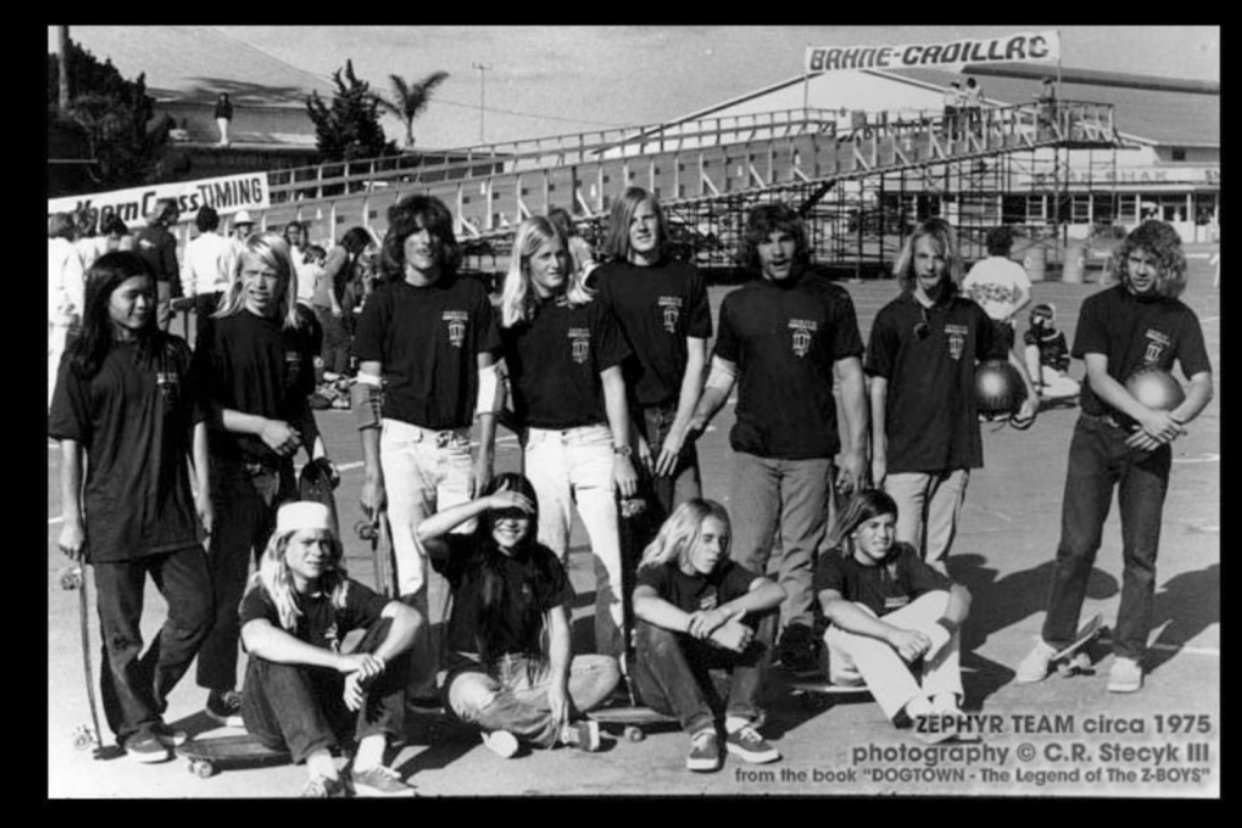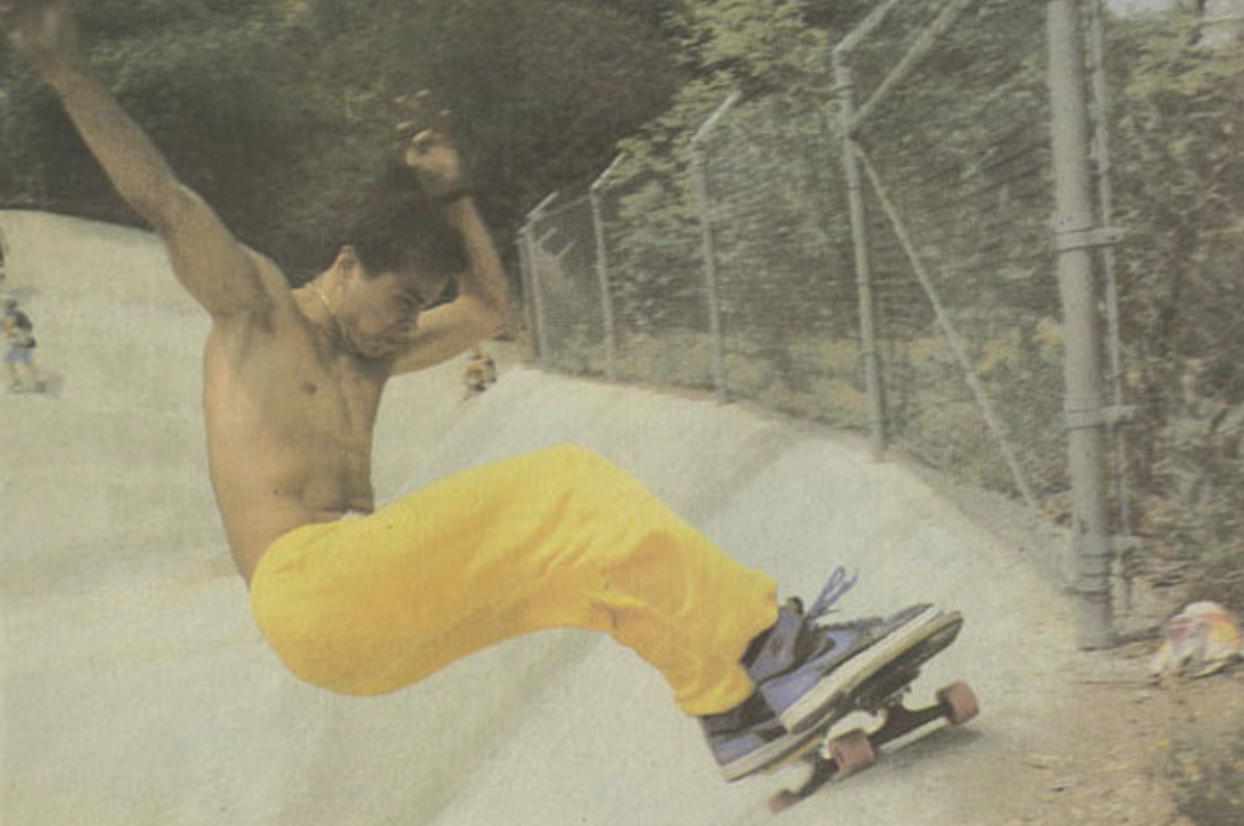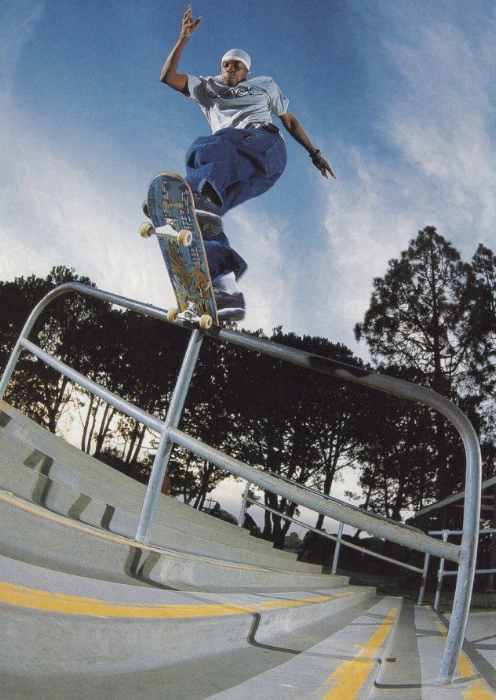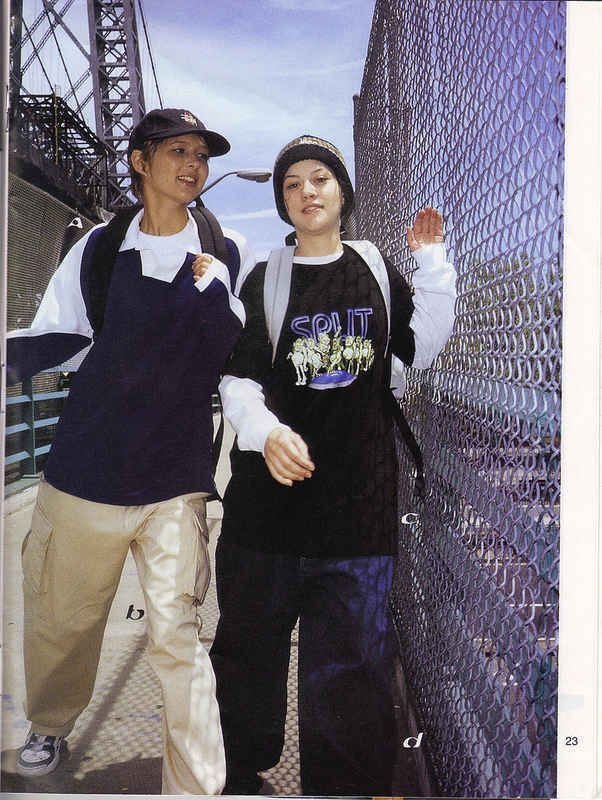Skateboarding: The Birthplace of Modern Streetwear
By Kyle Earl
The dictionary defines streetwear as “fashionable, casual clothes,” but how did this notion come about? While being influenced by cultural movements such as hip-hop and punk rock, our modern-day definition of streetwear is deeply rooted in what skateboarders wore out on the concrete. To fully understand the impact skateboarding has had on the fashion landscape, we must look at the history and culture of the sport.
Skateboarding began in the 1950’s as a pastime for surfers when the waves were low. In the early 70’s the sport surged in popularity following the creation of urethane skateboard wheels. Compared to previous metal and wooden wheels, urethane offered unprecedented durability, stability, and smoothness. Now capable of performing sharp turns and new tricks, the improved skateboard revolutionized the sport from leisure activity to a competitive phenomenon. The beginning of the decade was dominated by freestyle skateboarding, where skaters perform technical tricks on flat ground. Influenced by surfwear, this era’s attire consisted of very practical garments for the sport: tube socks, high shorts, and a T-shirt. This style shifted following the rise of the Z-boys: a legendary skate group from Venice, California who developed a new style of skating that imitated popular surfing moves on the street. They were also the first to skate empty pool bowls: inventing the concept of aerial skateboarding. The group rocked ripped jeans, vans, hockey tees, or simply no shirts at all, adding a “cool” factor to skateboarding that was not present before.
The carefree and defiant spirit of members of the Z-boys such as Stacy Peralta, Tony Alva, and Jay Adams helped bridge a connection between skateboarding and punk rock. The countercultural ideologies of the two groups meshed well and eventually culminated in the fusion music genre known as skate punk. Early skate punk bands such as JFA, Suicidal Tendencies, and Agent Orange and their affiliation with skateboarding helped solidify the public’s perception of skateboarding as being a movement of youthfulness and rebellion.
The Z-boys crew (Dogtown Coffee)
As the 1980s began, punk’s influence pushed skate culture further away from surfing. However, Shawn Stussy, the founder of the surf brand Stussy and a key figure in the streetwear scene, merged the two sports, creating apparel for both audiences. Despite Stussy making a name for itself in the skateboarding sphere, the first company providing clothing directly for skaters was Vision Street Wear. In an interview with HYPEBEAST, the godfather of Ura-Harajuku fashion Hiroshi Fujiwara, stated that “The first thing that caught my attention in streetwear was the skate label Vision — clothes for skaters. The street fashion I envision comes from skateboarding. Skateboarding was a sport you did on the street, so I think that’s where [streetwear] comes from, originally.”
Christian Hosoi in Air Jordan 1 “Royals” (Sneaker History)
The 1980s also saw monumental changes in the footwear skaters were wearing. Vans dominated the era, with their high-top styles being ideal for vert and bowl skating. In the late 80s Vans released the iconic Steve Caballero pro signature shoe, becoming a staple in the skating world. Nike’s Air Jordan One also became very popular during this time. Originating as a basketball shoe, many skateboarders adopted the sneaker as part of their regular routine due to its comfortability, durability, style, and many choices of colorways. The prominent skate group Bones Brigade and the face of skateboarding Tony Hawk regularly sported these shoes for skate sessions–immortalizing the shoe in skate culture. In our present day, Nike Air Jordan Ones are at the forefront of all things streetwear. Despite the success of the high top, the emergence of street skating in the late 80s caused skaters to start a trend of “cutting down” Caballero’s pro shoe. Cutting around the ankle of the shoe allowed for more freedom when performing street tricks. This led to Caballero and Vans realizing skaters wanted a lower-cut version of the Caballero shoe, resulting in the birth of the Vans Half Cab: esteemed by many to be the most legendary shoe in skate history.
In the 90s, street skating flourished, and skaters’ garments evolved to be better suited for performing technical flip tricks and grinding handrails. Skaters adopted large tees and baggy denim jeans for extra protection and mobility; flatbill hats and beanies also gained traction due to them staying on one's head while riding fast. East Coast hip-hop aesthetics—defined largely by workwear and sportswear styles from Carhartt, Polo Sport, and Tommy Hilfiger—became very prevalent in this era. The hip-hop and skate aesthetics combined served as the basis for what many would consider streetwear.
Professional skater Kareem Campbell (Ozko)
A brand that truly embodies the spirit and essence of streetwear is Supreme. Supreme, founded in 1994 by James Jebbia, had its origins as a humble skate shop on Lafayette Street in Manhattan, New York. The brand’s target demographic—skaters—was made evident through the store's layout: clothing racks on the outskirts of the store surrounding a large open center, in order for skaters to ride in and out freely. The support towards skaters was recognized by the community, with influential skateboarders like Mark Gonzalez and Jason Dill frequenting the store. The clean, gallery-esque walls and limited products available differed from a typical skate shop’s loud, maximalist atmosphere. This unique design set the company apart from the rest, creating a blueprint that many streetwear shops follow today. Supreme, a now billion-dollar enterprise, has become massive in the hip-hop and fashion scene, but not before the cultural melting pot that was the 2000s.
The original Supreme Store in Manhattan, New York (Modern Notoriety)
Entering a new millennium, the skate industry was thriving, largely in part to the popularity of Tony Hawk’s Pro Skater, X games, and the Jackass franchise. Shopping malls around the globe began offering skate apparel and footwear, highlighting skateboarding's emergence into the mainstream. One company that wished to capitalize on skateboarding’s increasing popularity was Nike. Nike Dunks were highly acclaimed among skaters, so the company took initiative by releasing the SB Dunk in 2002: a dunk specialized for skateboarding. Nike recognized the importance of capturing the support of this increasingly-influential community and the SB dunks were a perfect means of doing so. Despite the shoes being sold exclusively in skate shops, they still gained mass popularity. Non-skaters loved the aesthetic of the shoe and were soon crowding skate shops to acquire a pair.
2002 Dunk Low Pro SB - Orange Flash (StockX)
2000s skatewear was the home to many different styles and cultures. Non-skaters were now heavily invested in skate attire, viewing it as an outlet of self expression. Brands such as Four Star, iPath, and HUF began to infuse new ideas into skate fashion, exploring everything from chunky sneakers to loud prints and technical wear. With influences abound and style options endless, a skater’ s individual style was largely influenced by the type of music one listened to. A hip-hop enthusiast likely wore baggy cargo shorts and hoodies, while a punk or metal fan might’ve opted for tight jeans and puffy skate shoes. Professional skaters also became a source of fashion influence; the specific style worn in their skate parts prompted onlookers to follow suit.
Two girls influenced by skatewear (Pinterest)
A prime example of a professional skater influencing streetwear is the late Dylan Reider. Tank tops, tucked-in shirts, rings, slim-fit denim, and carabiners full of keys: looks that are still commonly worn today, were popularized by him through his stylish skate parts. Not only was he an illustrious skater, but he was also an accomplished model. In 2013 Rieder modeled for Vogue alongside the famed Alexander Wang and A$AP Rocky. He also appeared in DKNY’s spring 2014 ad campaign, establishing his crucial role in blurring the once clear lines distinguishing industry fashion and streetwear.
Dylan Rieder (The Hollywood Reporter)
The 2017 Supreme Louis Vuitton collab took the world by storm, with street skaters to runway enthusiasts alike both observing the unprecedented release. Supreme also collaborated with luxury companies such as Burberry, Comme des Garcons, and Rinowa: further cementing the brand as one of the strongest presences in the fashion landscape. In 2020 the late Virgil Abloh, artistic director of Louis Vuitton at the time, released a Louis Vuitton skate shoe modeled by pro skater Lucien Clarke. A long-time advocate for skateboarding's importance in fashion, Abloh created 50 unique colorways of Nike Dunk Lows through his Off-White brand. Palace Skateboards, a skating company formed in 2009, collaborated with the likes of Harrods for an unexpected yet magical collection. Palace’s pro riders Lucien Clarke and Blondey Mccoy have also infiltrated seasonal collabs with Burberry and Fred Perry, emphasizing the new normality of skate and luxury crossovers. Stussy has also established itself as a prominent fashion entity through its collaborations with designers such as Rick Owens, Marc Jacobs, and Takahiro Miyashita. In 2019, Gucci’s creative director Allesandro Michele teamed up with skaters worldwide for an inclusive skate-oriented campaign. It is clear that the skateboarding “look” has transcended attire that is practical for those hopping on a board and has transitioned into runway; however, this begs the question as to what makes skateboarding so alluring to the fashion industry.
Lucien Clarke on the runway for Louis Vuitton’s Spring 2019 show (WWD photo)
On the surface skateboarding and high fashion should be at odds with each other. From a gritty counter-culture in contrast to dreamt-up designer outfits, the two are worlds apart. These differences however are the reason why the crossover between the two is at an all-time high. Outfits primarily selected based on convenience and practicality, skaters suggest a lack of care about appearance, a way of life and aesthetics many wish to emulate. The culture has always been about democracy and accessibility, granting the average person a voice in impacting a movement–a voice they likely would not have in the high fashion realm. Those in the high fashion industry are fascinated by such a foreign, yet successful approach to clothing and wish to tap into a new audience. Instead of going on and on about all the reasons why a skater’s style is so coveted, I think Noah’s creative director Brendon Babenzien puts it best: “Skaters are amazing, smart, and creative, and people want a piece of what they have. It’s that simple.”
The current relationship between luxury and streetwear is stronger than ever before. This is evident through Dior’s Fall 2022 skatepark-inspired runway show, where models were surrounded by ramps, handrails, and half pipes. Gucci and Palace’s recent October collaboration features a stunning array of clothing pieces ranging from leather jackets and football jerseys to loafer shoes. The continual fusion of skating and the fashion industry highlights the respect the two have for each other.
Models posing for the Dior Fall 2022 Fashion Show (CNN)
Skateboarding’s impact is ever-present in the streetwear scene today. Classic looks such as an oversized tee, cuffed baggy pants, and Nike Dunks can be seen on the streets rocked by both skaters and non-skaters alike. In recent years, new looks have arisen primarily through the influence of women and LGBTQ+ skaters. In an interview with Vogue, professional skater and Dior model Briana King said that “I definitely see people moving out of their typical skateboard attire. Most of us [women and LGBTQ+ skaters] started skateboarding later on in life, so we already found our sense of fashion outside of skateboarding. And we bring it into [the sport].” The cultural vector that is skateboarding is constantly reinventing itself and will continue to change style and culture for years to come.
Skateboarder and model Evan Mock attending the Raf Simons Spring/Summer 2022 Show (Melodie Jeng/Getty Images)











